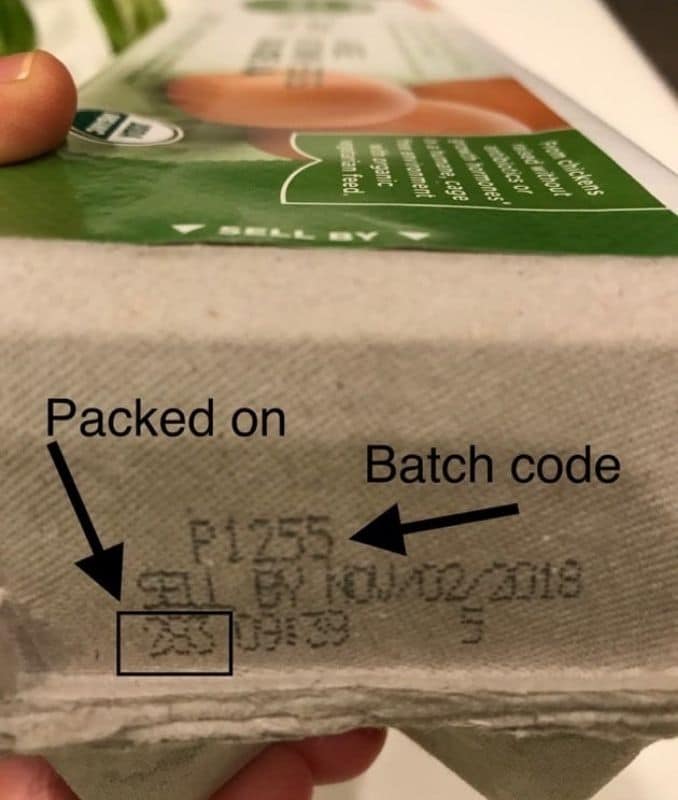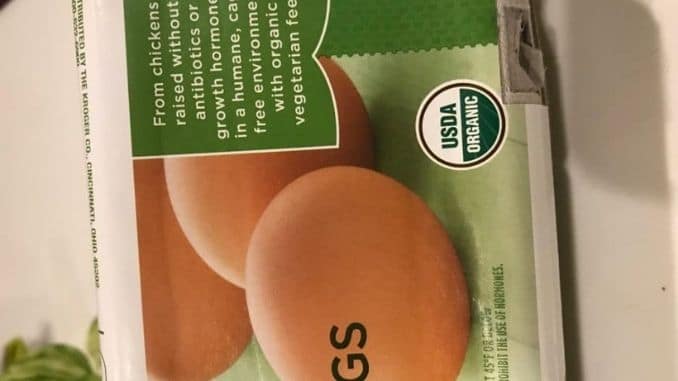
The labeling on eggs can be confusing, with many claims on cartons that might mislead you into thinking you’re purchasing eggs from free-range chickens. However, the truth is that not all eggs are created equal, and many come from chickens kept in restrictive environments with limited access to sunlight and pasture. To make the right choice and ensure you’re buying the best eggs, check out our Complete Guide to Buying Eggs, which helps break down the labels and guide you in selecting eggs that align with your ethical and nutritional preferences.

Moreover, we’ve unscrambled the labels and packaging claims on egg cartons that you’re likely to find in your local grocery stores. In this complete guide to buying eggs, you’ll also learn the truth about expiration dates, hormones, antibiotics, and the life of an institutionally raised laying hen. Additionally, we’ll offer some tips on where you can buy the best eggs for your buck.
What Is the Importance of an Egg’s Grade?
A Complete Guide to Buying Eggs: No doubt, when you’re shopping for eggs, you’ve noticed a grading system on the cartons. Moreover, there are three general grades for eggs: AA, A, and B. Additionally, these grades have been put in place by the United States Department of Agriculture (USDA). Moreover, the grades do not reflect the nutrition of the egg. Here is a description of each egg grade:
| Grade AA |
| The highest grade for eggs is AA. This grading has nothing to do with the nutrition of the eggs or the handling of the chickens. Rather, the AA grade has to do with the smoothness of the shell, the thickness of the white and the firmness and shape of the yolk. A grade AA egg will have a thick white and a firm, round yolk that stands up above the white. The yolk is perfectly shaped. The shell is smooth and clean with no defects. |
| Grade A |
| Grade A eggs are the eggs that make up the majority of what you’ll find at the grocery store. The grade A yolk has to be the same as an AA yolk. However, the white can be a little thinner in a grade A egg. The shells must still be clean, but slight defects and bumps are acceptable. |
| Grade B |
| The lowest grade for eggs is B. Grade B eggs aren’t commonly sold in stores. They are more often used to make powdered eggs and liquid egg products. Grade B eggs may have a flatter, wide yolk and thinner whites. Their shells may have stains or defects. |

(Photo: Amanda Wynant)
What About Egg Sizes?
Furthermore, you’ve likely noticed the sizes of eggs on the cartons: small, medium, large, extra-large and jumbo. In general, the size of the egg has nothing to do with the nutritional content therein. You mainly have to pay attention to the size when you’re preparing a very exact recipe. Most recipes are written assuming you are using a standard, large egg. Here’s a breakdown of the egg sizes you may find at the grocery store:
| Small egg | 1.5 ounces |
| Medium egg | 1.75 ounces |
| Large egg | 2 ounces |
| Extra-large egg | 2.25 ounces |
| Jumbo egg | 2.5 ounces |
What Do All the Numbers Mean on the Side of the Carton?
A Complete Guide to Buying Eggs: When you pick up a carton of eggs at the market, you likely check for broken eggs, and then glance at the expiration date on the side of the carton. Did you know that you can also check the “packed-on” date as well?
Egg cartons have several numbers on the side. One is the “sell-by” date. It’s marked clearly so you can decipher it easily. Another number is on the carton. It is a three-digit number. This is the date on which the eggs were packed. It is written in three digits to set it apart from the “sell-by” date.
Moreover, in the photo below, the three-digit, packed-on date is 283. That represents the 283rd day of the year 2018, or October 10, 2018. It is a good idea to pay attention to this date because eggs are normally considered fresh for about five weeks. In this case, that is a little over two weeks past the “sell-by” date.

(Photo: Amanda Wynant)
Regardless of the date printed on the side of the carton, the most reliable way to test an egg’s freshness is to put it in a bowl of water. If the egg floats, it has gone bad. Throw it out. If it sinks, it is fresh. If the egg sinks but stands on one end, it’s still fresh and fine to eat, but needs to be used soon.
A Complete Guide to Buying Eggs: Some Claims on Egg Carton Labels Mean Nothing at All
There are a few selling points highlighted on egg cartons that don’t mean much:
- Brown eggs: The color of the egg doesn’t change the nutritional benefit of the egg in any way. Different breeds of chickens lay different colored eggs. Brown and white are the most common colored eggs in grocery stores. But on the farm, you can find pink, green, blue and speckled eggs. Many stores sell brown eggs for a higher price than white ones. The color of the eggs has no effect on the taste or nutritional content inside.
- No hormones: The USDA prohibits the use of hormones in hens that lay eggs. You may see “hormone-free” claims on carton labels. Pay no attention to the claim. It means nothing since egg farmers aren’t allowed to use hormones on their laying hens anyway.
- All-natural: “All-natural” can mean anything. This claim is not regulated. The USDA regards all eggs as natural.
- Farm fresh: It certainly sounds nice to label eggs with “farm fresh.” However, it means nothing. A farm can be anything from a group of buildings to a lush field.
- Antibiotic-free: This is another misleading claim. All laying hens in the U.S. are raised without antibiotics. If a hen is sick and needs antibiotic therapy, eggs laid by that particular hen will be discarded or used for something other than human consumption.
- Fertile eggs: Fertile eggs could grow into little chicks to be hatched if they are incubated soon after they’re laid. However, after lengthy refrigeration on your grocery store shelves, the designation doesn’t mean much. There is no nutritional difference between fertile and nonfertile eggs. A hen that laid fertile eggs received a little extra attention from a lucky rooster before she laid those eggs if you know what we mean.

A Complete Guide to Buying Eggs: Other Label Claims to Paint a Pretty Picture
Some of the verbiage on an egg carton is lovely. Does it mean what you think it means?
- Local: Local eggs are not necessarily from the farm down the street. Any eggs labeled “local” can be from farms up to 400 miles away.
- Cage-free: According to the USDA, “Eggs packed in USDA grade-marked consumer packages labeled as cage-free must be produced by hens housed in a building, room or enclosed area that allows for unlimited access to food, water and provides the freedom to roam within the area during the laying cycle.” Cage-free hens are not in cages, but they’re not exactly outside on the farm, either. Moreover, they are in a large building, normally with concrete floors. They do, however, have the freedom to perch and roam a bit.
- Free-range. Moreover, per USDA standards, free-range means the same as cage-free, with one exception. Free-range hens must also have access to the outside. Access could mean a door that is left open for the chickens to exit. The hens do not have to go outside, but as long as they have access, their eggs can be labeled free-range. Furthermore, “outside” can be a cement lot devoid of any dirt, grass or bugs for the hens to enjoy. Additionally, many times, the hens do not utilize the access door to the outside.
- Vegetarian-fed. The benefit of eggs laid by vegetarian-fed hens is that the flock was not fed animal by-products. The downfall is that they are, instead, fed a diet of mostly corn. Moreover, that corn is almost always genetically modified. Chickens, by nature, are not vegetarians. They should be eating bugs, worms, and grubs, in addition to their feed.
- Omega-3 enriched. Eggs that are labeled “omega-3 enriched” are from hens that have had omega-3 oil added to their feed. These hens may likely be crowded into cages. There are no other standards for this specification. Eating omega-3 enriched eggs may help you to get more omega-3 oil into your diet.
A Complete Guide to Buying Eggs: Some Label Claims Are Worth an Extra Couple of Bucks
There are a few egg classifications that might entice you to shell out a little more money. (We couldn’t resist the pun.) These include:

(Photo: Amanda Wynant)
- Certified organic: To carry the certified organic label, eggs in this category must come from hens that are fed non-genetically modified organisms, a 100-percent organic diet free of herbicides, pesticides, and chemical additives. The hens are also required to have regular outside free time. Moreover, this certification is third-party verified.
- Pastured or pasture-raised: Moreover, perhaps the gold-standard in egg quality comes from pasture-raised hens. Pasture-raised hens are allowed to roam freely on open pastures all their lives. They eat bugs, stand and sit on porches, enjoy the freedom and do what chickens are supposed to do in nature. According to a study by Cambridge University, pastured eggs contain twice the amount of vitamin E as caged eggs, 38 percent more vitamin A and more than double the omega-3 fats.
Consider the Source
When it’s at all possible, find a local farm and purchase your eggs on site. Moreover, visit the farm and check out the living conditions of the chickens. You’ll likely pay a little less if you buy directly from the farmer than if you buy pasture-raised eggs at the grocery store. Moreover, backyard operations aren’t bad, either. Additionally, just inquire about the feed and take a peek at the birds to make sure their conditions are optimal.
If eggs are a large part of your diet, you should buy the carton that offers the best nutrition for your grocery dollar. Whether you get them from a local farm or your local grocer, be sure to read the labels closely so that you know what you’re buying.
For your guide to the best foods to heal your body, check out The Best Foods that Rapidly Slim & Heal in 7 Days, here!
.

